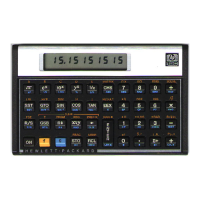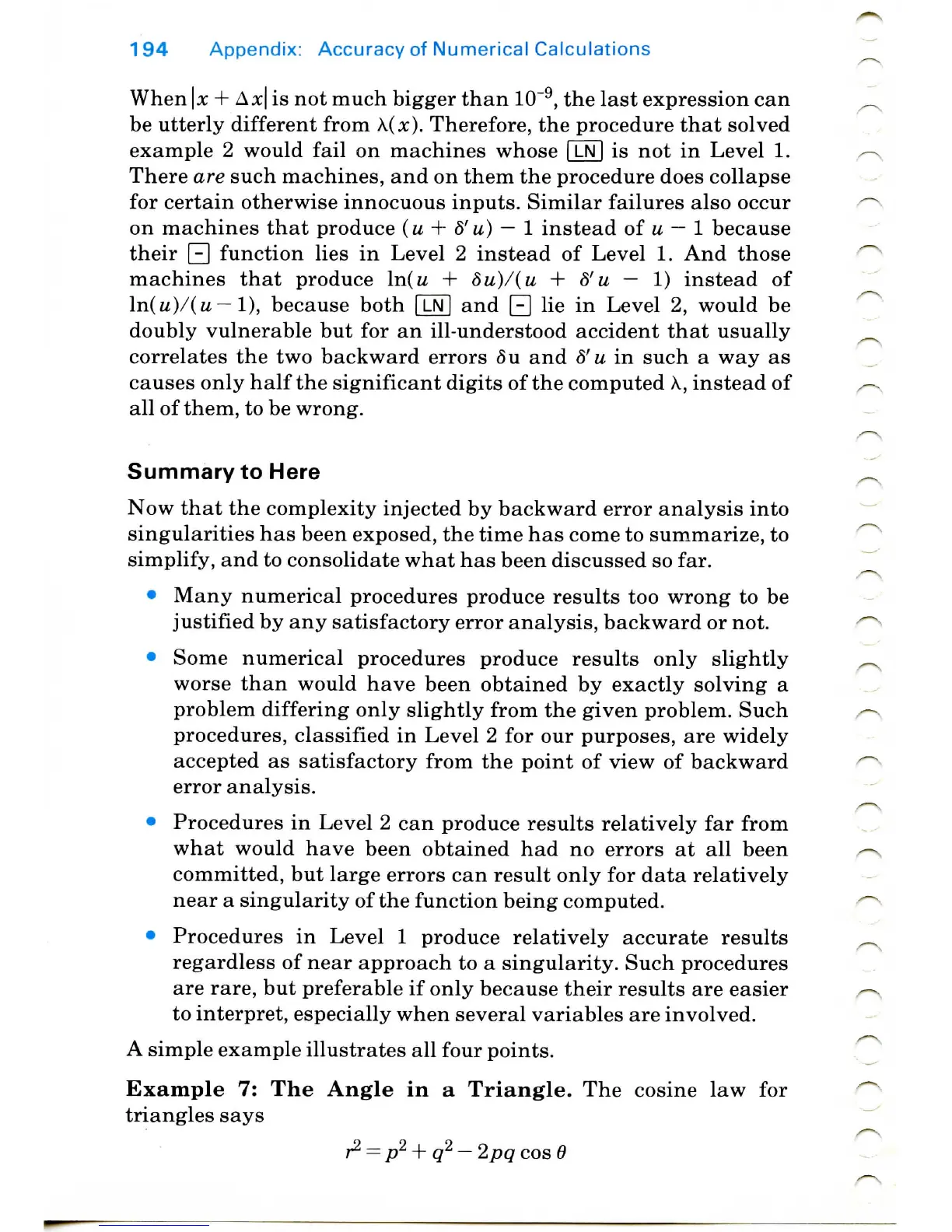194
Appendix:
Accuracy
of
Numerical Calculations
When
\ +
Ax\s not
much bigger
than
10~9,
the
last
expression
can
be
utterly different
from
X(^).
Therefore,
the
procedure
that
solved
example
2
would
fail
on
machines whose
|
LN
| is not in
Level
1.
There
are
such machines,
and on
them
the
procedure does collapse
for
certain otherwise innocuous inputs. Similar failures also occur
on
machines
that
produce
(u
+
8'u)
—
I
instead
of
u
—
1
because
their
0
function lies
in
Level
2
instead
of
Level
1. And
those
machines
that
produce
ln(u
+
8u)/(u
+
8'u
— 1)
instead
of
ln(u)/(u
—1),
because both
|
LN
| and
Q
lie in
Level
2,
would
be
doubly
vulnerable
but for an
ill-understood accident
that
usually
correlates
the two
backward errors
5u
and
<5'
u in
such
a way as
causes only half
the
significant digits
of the
computed
X,
instead
of
all of
them,
to be
wrong.
Now
that
the
complexity injected
by
backward error
analysis
into
singularities
has
been exposed,
the
time
has
come
to
summarize,
to
simplify,
and to consolidate what has been discussed so far.
•
Many numerical procedures produce results
too
wrong
to be
justified
by any
satisfactory error analysis, backward
or
not.
•
Some numerical procedures produce results only slightly
worse
than
would have been obtained
by
exactly solving
a
problem
differing
only slightly
from
the
given problem. Such
procedures,
classified
in
Level
2 for our
purposes,
are
widely
accepted
as
satisfactory
from
the
point
of
view
of
backward
error analysis.
•
Procedures
in
Level
2 can
produce results relatively
far
from
what
would
have been obtained
had no
errors
at all
been
committed,
but
large errors
can
result only
for
data
relatively
near
a
singularity
of the
function being computed.
•
Procedures
in
Level
1
produce relatively accurate results
regardless
of
near approach
to a
singularity. Such procedures
are
rare,
but
preferable
if
only because their results
are
easier
to
interpret, especially when several variables
are
involved.
A
simple example illustrates
all
four
points.
Example
7: The
Angle
in a
Triangle.
The
cosine
law for
triangles
says
r2
= p2 + q2
—
2pq cos
6

